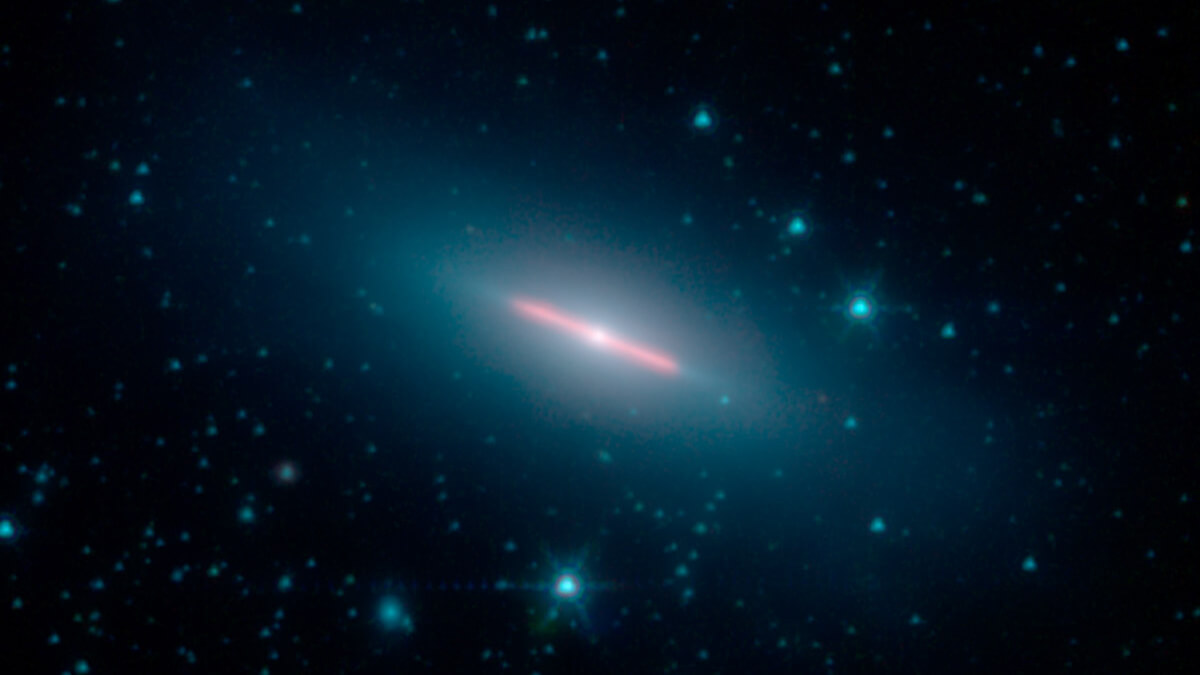In context: Launched almost sixteen years ago, the $720 million Spitzer infrared space telescope had a planned mission time of 2.5 years that was extended to more than twice this figure keeping in view the on-board liquid helium supply. Six years later in 2009 when most of the telescope's instruments became inoperable due to the liquid helium running out, which was needed to maintain extremely cool temperatures, as low as −450 °F (−268 °C), the on-board infrared array camera (IRAC) remained the only working module that took an image of a perfectly sideways galaxy.

NASA's Spitzer space telescope is meant to retire in January next year but during its lifetime, it has observed many remarkable spectacles in the vastness of space, such as the Henize 206 nebula, the Cat's Paw nebula, magnetic field lines of the Cigar Galaxy and the Pandora's Cluster, to name a few.
This week, NASA's JPL shared an image taken by Spitzer's IRAC module which the agency says might look like a "lightsaber" floating in space but is actually an entire galaxy viewed sideways.
"The long red beam in the center of the image is a galaxy called NGC 5866. It lies 44 million light-years from Earth and has a diameter of roughly 60,000 light-years - a little more than half the diameter of our own Milky Way galaxy," says NASA, adding that due to the galaxy being sideways, most of the structural features are invisible.
No, this red beam in space isn't a light saber! It's a galaxy, far, far away — 44 million light-years away, to be exact.
— NASA (@NASA) 7 August 2019
Because we're facing the galaxy's edge, our @NASAspitzer telescope detects its infrared light but can't see its spiral features. More: https://t.co/0bWqjKIHIy pic.twitter.com/WPqEHqkCcl
With Spitzer's IRAC detecting infrared light, NASA says that the red color emitted from the galaxy corresponds to infrared wavelength produced by dust, that absorbs light from stars and then re-emits it at longer wavelengths.
NASA's JPL also hints that NGC 5866 hasn't collided with any other galaxy yet as the dust ring around it "lacks any sign of twists or distortions" that often appear as the result of a merger.
Given that the telescope, and scientists for that matter, can only observe what comes their way for such distant bodies, the sideways orientation of NGC 5866 is "challenging," says NASA. "Our view of this galaxy is somewhat like our view of the Milky Way galaxy: Because Earth lies inside the Milky Way, we can see it only edge-on rather than face-on," says the agency, but how the Milky Way looks face-on has been made possible by astronomers through simulation owing to our proximity to the rest of the galaxy.
The Sun-orbiting Spitzer telescope took this image during its "cold" mission, which ended a decade ago with three infrared wavelengths captured by the IRAC. "Blue light corresponds to Spitzer's observations at a wavelength of 3.6 microns, produced mainly by stars; green corresponds to 4.5 microns; and red corresponds to 8 microns," says NASA, with the blue haze around the galaxy produced by stars that make up most of the mass of this galaxy.